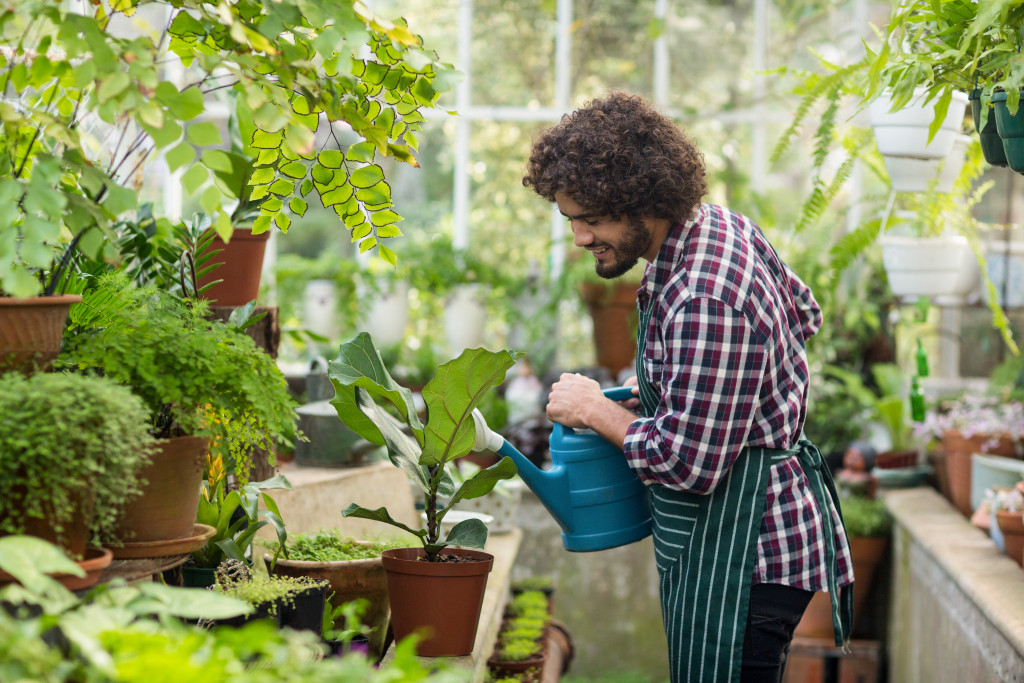Gardening is regarded as an activity that is good for one’s health. It is a form of physical activity and, therefore, counts as an exercise. It also forces people to spend time outside to breathe fresh air and get ample sunshine for a dose of vitamin D.
Gardening has been proven to lower blood pressure, improve sleep, burn calories and tone muscles, etc. However, it is not always safe. Dangers are lurking in your garden, and, if you are not aware, you might find yourself becoming ill. Here are the potential hazards that gardeners might encounter in their gardens and how to prevent them.
Cuts and Scrapes
When working in the garden, getting cuts and scrapes happen. A thorny plant can accidentally nick and wound your hand. The tools typically used when gardening can also be sharp and, therefore, can cause injuries.
This is dangerous because although the wounds would unlikely be deep enough to be life-threatening, it creates a doorway for all kinds of bacteria to enter and infect the gardener.
Gardeners should always wear the proper attire whenever they go out to tend to their garden. Having a pair of thick gloves, work safety boots, and knee pads will prevent them from getting cuts and scrapes.
Wearing the right clothing will also prevent injuries from slips and falls, which also can happen when gardening, especially among older folks.

Tetanus
The bacteria that causes tetanus live in the soil. It can cause illness if it gets into an open wound on a person’s hands or feet.
Tetanus affects the nervous system. It causes uncontrolled spasms and stiffness, especially around the neck and jaw area. Other symptoms include body pains, fever, sweating, rapid heart rate, and high blood pressure. If left unaddressed, it can lead to difficulty breathing and death.
There is an existing vaccine against tetanus in the U.S. However, not adults might be fully protected from the bacteria. Getting a booster for the vaccine is recommended every 10 years.
Legionnaires’ Disease
Disease-causing bacteria also exist and propagate in standing water. The Legionella pneumophila is bacteria that causes a type of severe pneumonia called Legionnaires’ disease. About 5,000 Americans are diagnosed with Legionnaires’ disease every year.
The bacteria is more common in artificial water supply systems, including air conditioning. However, it has also previously been detected in water sprinklers.
It takes two to 10 days before symptoms occur. Those infected can experience headaches, muscle aches, fatigue, chills, nausea and vomiting, diarrhea, coughing, chest pains, difficulty breathing, and a fever of 104 degrees Fahrenheit (40 degrees Celsius) or up.
The bacteria also cause a milder illness called Pontiac fever, which does not manifest through lower respiratory symptoms. It usually goes away on its own, even without medication.
Gardeners should be careful around standing water in their gardens. They should avoid having standing water on their property anyway because it can also serve as a breeding ground for mosquitoes.
Lyme Disease
Ticks are everywhere and they bite humans, too. If a person gets bitten by a tick, they can be infected with various illnesses, including Lyme disease.
About 300,000 Americans are estimated to get Lyme disease every year. It is the most common vector-borne illness in the U.S.
Lyme disease symptoms include headache, muscle and joint aches, swollen lymph nodes, fatigue, chills, and a fever. Those who have been bitten by an infected tick can also get a rash that feels warm to the touch and gradually enlarge.
It can eventually lead to heart palpitations, nerve pain, inflammation of the brain and the spinal cord, and facial palsy.
To prevent getting bitten by a tick, gardeners should wear light-colored and long-sleeved clothing whenever they have to work. Applying insect repellent can also shoo the parasite away.
Also, the garden and the entire yard should be maintained properly to avoid having ticks around. The grass should regularly be mowed, and clippings should be discarded properly. Woodpiles should also be kept away from the garden.
Poisonous Plants
Plants also pose a danger, especially to young children and pets. When gardening, children and pets should be monitored strictly to prevent them from accidentally ingesting plants that can be toxic.
Many plants often found in gardens are actually poisonous. Some examples include hydrangea, daffodil, philodendron, lily of the valley, aloe, ficus, elephant ear, and foxglove.
Gardening is a great hobby for all ages. It provides exercise and sun exposure as well as calm a busy mind. However, before going into it, aspiring gardeners should be aware of possible dangers to prevent illnesses and injuries.